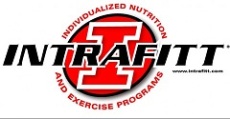|
|
You think you have been eating the right foods; low in fat, high in complex carbohydrates and fiber. You have even committed to exercising three, four, five, maybe even six times per week…but when you look in the mirror, you just don’t have the look you want. Well, you’re not alone.The compulsive desire of Americans to be “thin and beautiful” results in the spending of more than $50 billion dollars each year on diet programs and related products. Furthermore, for the last decade, the American population has been informed that a “healthy diet” should consist of 60% carbohydrates, 10% protein, and 30% fat. Ironically, the United States is now considered to have the highest percentage of overweight and obese individuals in the world! Is it possible that these so-called “healthy diets” combined with info-miracle weight loss programs are the very reasons why Americans are repeatedly unsuccessful at getting in shape –and more importantly staying in shape?
Let’s start with the facts!
In recent years, the Health Science Industry has uncovered an abundance of substantial and conclusive evidence indicating that the foods we eat combined with the type and amount of exercise we engage in each day has a tremendous effect on the regulatory systems of our bodies which directly control and influence the rate at which we build muscle and burn fat!
Research says the food we eat triggers a powerful hormonal response, which determines whether we burn excess body fat as fuel or store as energy. The reason high carbohydrate meals and/or snacks make losing body fat more difficult is directly related to the hormonal effects that carbohydrate rich foods have on the regulatory systems of the body! When foods rich in carbohydrates such as rice, pasta, breads, cereal, fruit, & other refined foods, are eaten in disproportionately high amounts, they encourage a tremendous release of insulin (a fat storing hormone).
One of insulin’s principle functions is to store body fat and inhibit its breakdown and release to be used as an energy source. Insulin also plays a major role in lowering blood sugar, which in turn increases sugar and food cravings, thus causing this perpetual cycle to repeat itself several times throughout the day.
The Magic Pill
It would be great to wake up some day and learn that science has revealed the “Magic Pill”…you know, the one that everybody in the world is determined to some day find enabling them to achieve the body they’ve always dreamed of. Unfortunately, this will never happen because it is not a formula or ingredient found in a pill that the body needs in order to burn fat and build muscle efficiently, it is machinery, or more specifically metabolic machinery that enables the body to breakdown fat and use it as a source of fuel. Metabolic machinery consists of INTRA-CELLULAR components such as mitochondrion, fat burning enzymes, capillaries etc.. which can only be manufactured by the body as a result of engaging in regular and consistent daily exercise combined with eating the proper amount and types of food at each meal throughout the day. This may seem like a difficult task, however, it is really very easy to do once you know how.
Individualized Nutrition & Exercise Guidelines
It is no secret that we are all individuals with very different and unique nutritional requirements, food preferences, fitness goals, etc. As a result, we each need to adhere to very specific nutrition and exercise guidelines that will enable our bodies to perform optimally on a day-to-day basis. Once we become compliant to the proper number of calories and ratio of complete protein, complex carbohydrates and healthy fats, combined with the proper amount and type of exercise, we will easily be able to achieve and maintain our desired health & fitness goals!
Reprogramming Our Bodies
Since we know there is NO MAGIC PILL and never will be, it is important to understand the reality associated with achieving and maintaining any desired health & fitness goal. The fact is, it does take time and effort to get in shape and stay in shape. If it were anything else but hard work, everybody on the planet would have the look they want!
Respect Yourself and Others Will Do The Same
If you’ve ever been in the presence of someone like Clark Bartram, Monica Brandt or some other famous athlete of fitness model, you can’t help but respect the amount of tireless effort and tenacity that these individuals put forth each day of their lives in order to achieve and maintain their desired health & fitness goals. Unlike someone who has gained a tremendous amount of wealth or fortune, athletes maintain a level of accomplishment, commitment and respect that money will never buy.
It is time to decide for yourself whether or not you want to put forth the effort necessary to achieve your ultimate health & fitness goals. If you do decide to commit, the only thing standing between you and your ultimate body is your level of compliance everything else you need in the way of information and guidance can be found at
If you decide NOT to commit, remember that yet another day of potentially looking, living and feeling better has passed you by and you may never have the chance to make it up!
In Summary
Although there are perhaps many reasons why we are still fat, there is simply NO REASON why we shouldn’t begin to optimize our eating and exercise habits so that in time, our bodies begin to reprogram themselves to be fit and lean for the rest of our lives!
Remember “Commitment is doing the very thing you said you would do long after the mood you said it in has gone!”
Questions? Email me at gladiator@intrafitt.com Need an individual nutrition and exercise program…visit www.intrafitt.com
In health and honor,
William Smith aka Thunder of the American Gladiator Days! |






